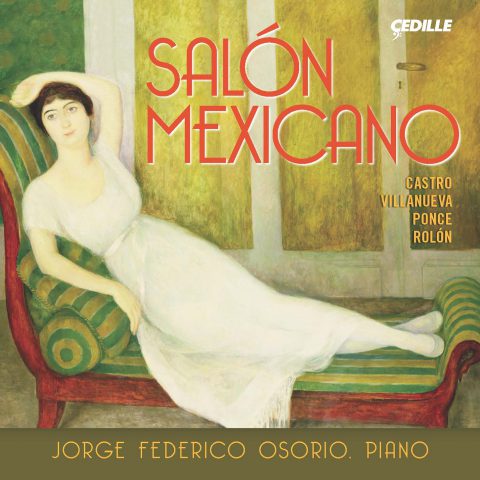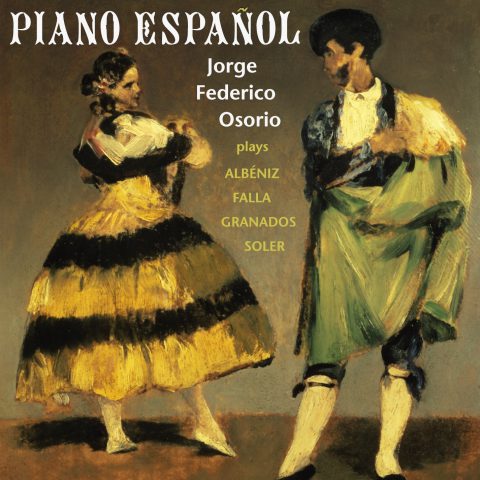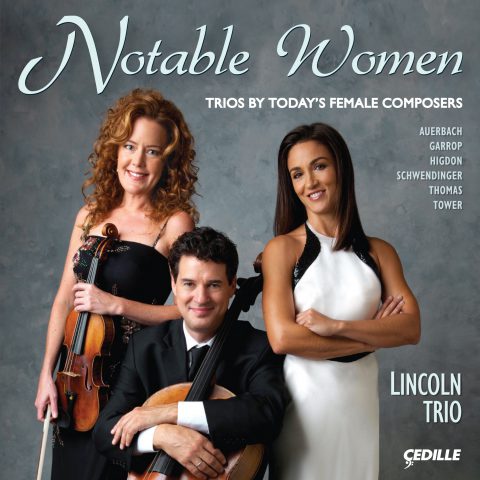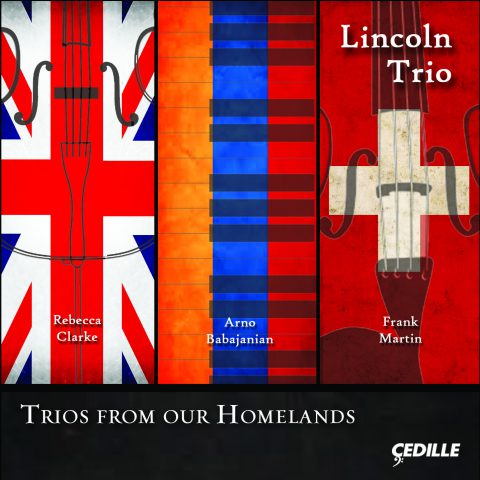Store
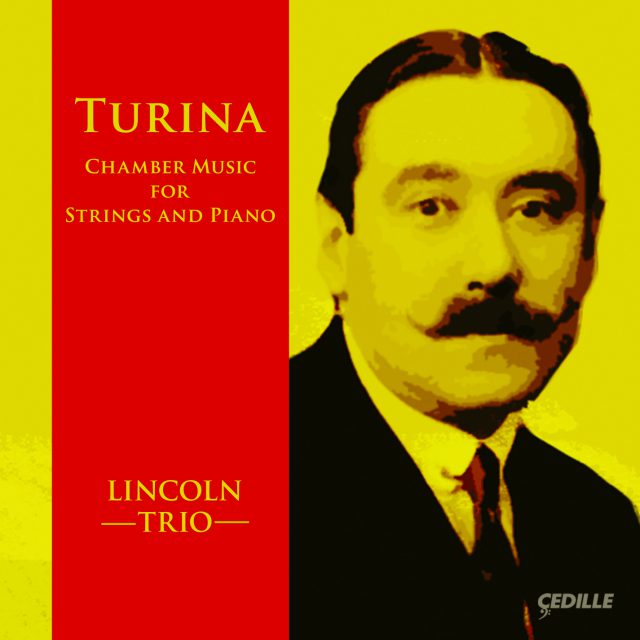
Store
Turina Chamber Music for Strings and Piano
Marta Aznavoorian, David Cunliffe, Desirée Ruhstrat, Doyle Armbrust, Ayane Kozasa, Jasmine Lin, Aurélien Fort Pederzoli
Following the success of its groundbreaking Cedille Records debut, Notable Women, the Lincoln Trio brings its “interpretative flair” (The Strad) and “masterly finesse” (Cleveland Plain Dealer) to the early 20th-century chamber music of Spanish-born, French-trained Joaquín Turina in a richly varied program of audience pleasing works blending Spanish dance and folk influences with romanticism and French impressionism.
The album offers Turina’s complete works for multiple strings and piano — four trios, a quartet, quintet, and sextet, including what is only the second recording of Turina’s lovely early Piano Trio in F Major. Among the Lincoln Trio’s guest artists on the CD is violist Ayane Kozasa, first prize winner at the 2011 Primrose International Viola Competition.
Preview Excerpts
JOAQUÍN TURINA (1882–1949)
Piano Trio in F major
Piano Trio No. 1 in D major, Op. 35
Piano Trio No. 2 in B minor, Op. 76
Círculo, Op. 91
Artists
Program Notes
Download Album BookletJoaquín Turina: Pianist-composer with strings attached
Notes by Andrea Lamoreaux
Opera-lovers know Seville as the home of Figaro, Don Giovanni, and Carmen, who sings about the city’s ancient walls in her Seguidilla aria. It’s the capital of the Spanish autonomous territory of Andalucia — a mountainous region in the country’s south bordering Portugal, Gibraltar, and the Mediterranean Sea — whose individual provinces include Granada, Cordoba, and Cádiz. Over the centuries, Andalucia has been home to influences from the Phoenicians, Greeks, Romans, Visigoths, Moors, Spaniards from the north, and Sephardim. It’s the traditional home of bullfighting and flamenco, and its Moorish-influenced architecture is renowned.
By the late 19th century, Seville was growing fast in terms of both industry and culture. The 20th century would find it an early battleground of the Spanish Civil War. More recently, Seville was the site of the 1992 Universal Exposition that celebrated the 500th anniversary of Columbus’s discoveries.
Joaquín Turina was born in Seville in 1882 and undertook his first musical studies there. He was a child prodigy on the piano and continued to play the instrument all his life. At age 20, he went to Madrid to continue his studies. Three years later, in 1905, he followed some of his fellow Spaniards — and other aspiring musicians and artists throughout turn-of-the-century Europe — by going to live and work in Paris. There he enrolled in the Schola Cantorum, a rather conservative-minded music school established by French composer Vincent d’Indy, who had been a student of Cesar Franck. Perhaps the most important event of Turina’s Paris sojourn — which lasted until the outbreak of the First World War in 1914 — was his encounter with two fellow countrymen, Manuel de Falla and Isaac Albéniz. These important Spanish composers influenced Turina to return to his roots and take musical inspiration from the sounds and rhythms of his native land, particularly the rich and varied traditions of Andalucia.
After 1914, Turina made his permanent home in Madrid. He achieved success with orchestral works such as La Procesión del Rocío, Sinfonía Sevillana, and Danzas Fantasticas. His best-known composition is probably La Oración del Torero, for either string quartet or string orchestra. He became a symphony conductor and taught composition at Madrid’s Royal Conservatory starting in 1930. With the end of the Civil War and the start of the Franco dictatorship, he accepted several semi-official positions including General Commissioner of Music, in which capacity he re-organized Spain’s National Orchestra. He was ill during much of the 1940s; because of poor health and administrative responsibilities, he composed relatively little during his last years.
The performances on this double disc, encompassing Turina’s chamber music for piano and strings, bring to light some unfamiliar pieces and allow us to trace the stylistic development of this profoundly interesting yet relatively little-known composer.
Turina had an abundant melodic gift; all of the pieces heard here overflow with rich lyricism. It’s also quite clear that he was a gifted keyboard virtuoso: the piano parts are challenging, thick with chords and octaves, exploiting every resource of the instrument. Also apparent is his fondness for sudden and frequent dynamic contrasts, quick alternation between pizzicato (plucked) and arco (bowed) string playing, and the ethereal sound of muted strings.
The Piano Trio in F major — so titled even though the first movement is in F minor — dates from 1904 and doesn’t appear on the composer’s list of official, opus-assigned works. Although it pre-dates his years in Paris at the Franck-influenced Schola Cantorum, it’s very French-sounding and reveals a Franckian principle, that of cyclic composition — a technique Turina favored throughout his life. The declamatory, turbulent first movement (Lento — Allegro non tanto) is succeeded by an Andante that opens and closes peacefully with several emotionally-charged passages in between. The third movement, Allegro alla danza, might be tricky to dance since it’s in 5/4 meter; it’s nonetheless a charming duet for violin and cello with solid piano support. The declamatory nature of the opening and reminiscences of earlier themes return for the finale.
The two opus-attached piano trios are probably Turina’s best-known chamber works. Of opus 35 in D major (1926), the composer wrote: “The first movement is unbelievably difficult technically. It is a prelude and fugue, the latter in reversed sequence, beginning with the stretti.” In fugal terminology, a stretto is a passage in which one voice, or instrumental line, begins the theme (or “subject”) and another enters with it before the first voice has finished. This technique intensifies the complexity of the polyphony and usually happens toward the end of a fugue. Here it comes at the beginning, with the cello entry quickly following the violin’s opening figure. As the movement reaches its conclusion, the fugal entries are presented more normally, leading to a quiet ending. The second movement, Variations, exploits a simple theme — related to the first movement’s fugal theme — through the medium of Spanish dance rhythms. The finale, Sonate, recalls both the fugal theme and the very opening theme of the first movement. Its tempo marking, Allegro, could just as well be Agitato.
Turina said he crafted his Piano Trio No. 2, Op. 76 in B minor “with more classical atmosphere than the First Trio and without popular elements.” Its overall impression is that of constantly alternating themes and tempos. The cello gets several solo passages, and violin and cello are paired in the central movement against the powerful piano. This middle movement, Molto vivace, is in 5/4 meter, adding a subtle, piquant quality to the rhythmic progressions.
Círculo, Op. 91, is subtitled Fantasía para Piano, Violin y Violoncello. It was written shortly before the outbreak of the Spanish Civil War but not premiered until 1942. It’s a short and colorful piece both cyclic and programmatic. As the title implies, it depicts the day as a circle, from dawn to dusk. The individual movements are Amanecer (Dawn), Mediodía (Noon), and Crepúscolo (Twilight). It begins very softly, on cello and piano, and ends likewise, with similar melodic material. The Amanecer movement progresses from its quiet image of first dawn to a more robust full daybreak. The pizzicato strings at the beginning of Mediodía call forth images of guitars played in the sunlight of a town square.
Turina’s Piano Quartet in A minor, Op. 67, dates from 1931. After a fanfare-like unison string opening and a brief piano answer, the violin gives out the first version of what will be the principal motive of the entire work, a four-note scale fragment that continually reappears in almost uncountable guises. Its slightly melancholy sound emanates from the progression of its first two notes, E-F, taken from the medieval Phyrigian mode. The quartet’s first movement (Lento — Andante mosso) is a rondo. The Vivo central movement is more dance-like; as in Círculo, pizzicato strings at the opening recall guitars. The finale presents a succession of contrasting sections. The violin opens with a short cadenza-like passage, but the succeeding texture is dominated by piano chords. The string writing is punctuated by emphatic unison passages in which the players recapitulate and transform motives heard earlier in the piece.
Turina’s Piano Quintet in G minor is his official Op. 1 and dates from 1907, when it was first performed in Paris. The principles of D’Indy’s Schola Cantorum, among whose aims was to resurrect contrapuntal practices from earlier centuries, seem to be echoed in the title of the first movement, Slow Fugue. (Another echo of earlier times is the slow-fast-slow-fast tempo layout of the four movements.) The fugal subject is given first to the muted viola, followed by second violin, cello, and first violin; only after all of the strings have spoken does the piano enter. The thematic material, growing out of the original fugue subject, becomes progressively more chromatic. The movement ends as it began, with the fugue theme played very softly. The Animé second movement, a strong mood contrast to the opening, is an exercise in headlong virtuosity. The third movement emphasizes lyricism; unusually labeled Andante scherzo, its sound evokes the first word much more than the second. The rapidly-paced finale opens with short cadenza-like passages for the violins and viola.
The sextet titled Escena Andaluza, from 1912, is evidence of Turina’s musical return to his Spanish origins even before his actual return from Paris to Madrid. The influence of the nationalist ideals of Albéniz and Falla has produced a highly original piece, short and vigorous, with a major passage in Habanera rhythm (as in Carmen). The principal interest of the Escena, outside of its melodic richness, is the unusual instrumentation: solo viola, piano, and string quartet. The opening is given over entirely to the piano, which has a strong presence throughout. The quartet has more of a supporting role as emphasis shifts between the unusually spotlighted viola and the keyboard.
Andrea Lamoreaux is Music Director of 98.7wfmt, Chicago’s Classical Experience
Album Details
Total Time Disc One: 73:55
Total Time Disc Two: 60:05
Producer: Judith Sherman
Engineer: Bill Maylone
Recorded: Bennett Gordon Hall at Ravinia in Highland Park, Illinois
January 28–30 and February 27–28, 2014
Front Cover, Inside Booklet & Inlay Card Design: Nancy Bieschke
© 2014 Cedille Records/Cedille Chicago
CDR 90000 150
